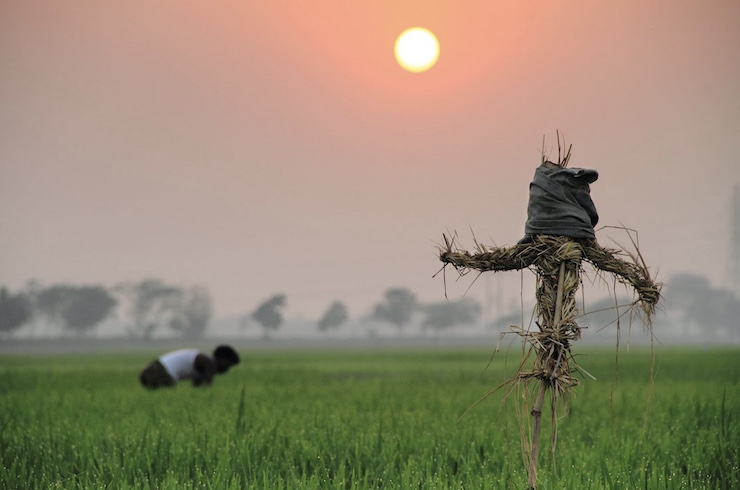Farmers Using Drones to Help Prevent Crop Damage from Birds and Bugs

Could drones be effective as aerial scarecrows protecting the nation’s crops from bird pests? It’s an intriguing possibility that researchers at Washington State University (WSU) are exploring through a series of field tests over the state’s vast farmlands. The first test, conducted two years ago, found that manually operated drones, doing random flights, successfully drove off or kept birds away from vineyards. The results were impressive: The drones reduced bird counts four-fold. A follow up test actually measured the impact that drone scarecrows can have on crop yield. The researchers focused on fields where they manually drove birds off. Those fields saw about a 50% reduction in damaged fruits – again an impressive result.
The latest test, which is still underway, is intended to pilot the use of automated drones to conduct aerial raids during peak growing or picking seasons or when birds are detected in large numbers. Birds are not the only – or even – the worst pest that threatens the nation’s farmlands, however. Insects are even more of a problem. Insect damage to crops costs the U.S. alone more than $100 billion per year. How can drones help? One obvious method is to spray insecticides, but that may not go over well with environmentalists, researchers say.
A more ingenious tactic is to drop predatory insects that can gobble up crop-eating pests while leaving the crops to flourish. A related technique is to deploy “mating disruptors” – insects that prevent crop predators from breeding, killing them off or at least limiting their numbers. thereby reducing crop damage. For example, a drone research group based in Quebec, Canada has experimented with the dropping of wasp eggs to eliminate pests that typically attack not only cornfields but also mixed spruce forests. When the wasps mature and conceive, they lay their own eggs in those of the pests.
Manoj Karkee, an associate professor in WSU’s Department of Biological Systems Engineering who helped coordinate the three bird studies, says drone scarecrows are still in the experimental stage. In the coming months, his team plans to meet with growers, technology companies, and state agricultural officials to discuss how to implement a commercially available fully-automated drone system.
Despite their obvious promise, it could take several more years before drone scarecrows become sufficiently cost-effective while also meeting state regulations for farm management guidelines. Karkee and his research team also envision some technical refinements that could make the drone scarecrows more effective. One idea is to make the drones look like actual predators, such as hawks or crows. Another is to equip the drones with reflective propellers, allowing them to scare birds off from numerous angles.
In the case of insects, pest researchers say that more advanced thermal imaging could allow for improved detection of pest concentrations that are usually invisible to the eye. For example, a “sensing” drone equipped with special UV technology could identify crops showing early stress from insect infestations before passing their data on to a “decision” drone that would precisely target affected areas with pesticides or other pest-killing bugs.
|